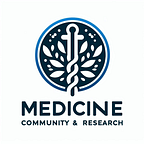CRISPR Gene Editing
By Meera Shanmugam
Introduction
Clustered Regularly Interspaced Short Palindromic Repeats, or CRISPR, is a gene-editing technology that has completely changed the field of genetics and molecular biology. Even though it was first thought to be a bacterial immune system, CRISPR has been changed to help with precise gene editing, allowing scientists to make very specific changes to the DNA of organisms. This technology has many possibilities to completely change modern medicine.
How CRISPR Works
CRISPR technology has 2 parts: the Cas9 enzyme and a guide RNA (gRNA). The gRNA is created to match a specific DNA sequence in the genome. When put into a cell, the gRNA brings the Cas9 enzyme to the DNA sequence that needs to be changed and the Cas9 makes a precise cut. The cell then naturally repairs itself, resulting in the alteration of the gene sequence. The precision of CRISPR makes it an important tool for gene editing. Unlike other methods, CRISPR can directly target and modify specific genes, minimizing the possibility of the wrong gene being cut and improving the accuracy of genetic engineering.
Applications in Medicine
CRISPR can help fix many different genetic disorders by correcting mutations at their source. In diseases like cystic fibrosis or sickle cell anemia, CRISPR is used to repair the incorrect genes. If treated early enough most patients have experienced significant improvements after CRISPR treatments. CRISPR is also being used to improve cancer treatments. By modifying immune cells to better recognize and attack cancer cells, CRISPR could improve the effectiveness of immunotherapies. CRISPR can edit T-cells to have receptors that target specific cancer markers, allowing the body to have better immunity against tumors. CRISPR may also have the ability to help treat infectious diseases. Researchers are investigating CRISPR approaches to target and disable viral genomes inside of infected cells. This could help create treatments for viral infections such as HIV, where the virus becomes part of the person’s DNA and is hard to treat.
Ethical and Safety Considerations
While CRISPR has huge potential, many people have ethical and safety concerns about this tool. The ability to edit human embryos has caused people to debate about “designer babies”, which allows people to design the DNA of children and give them selective traits. Scientists are still unsure of the long-term effects of gene editing, and there is a concern over unintended consequences that could be caused by off-target changes.
The ease of using CRISPR technology raises concerns about people misusing it for unethical reasons.
Future Prospects
With more research, there are even more possibilities for application and to improve its safety and efficiency. Better delivery methods like lipid nanoparticles and viral vectors are making CRISPR more effective in targeting specific cells. Things like base editing and prime editing are also increasing the precision of gene editing, allowing for smaller genetic modifications to be made without completely breaking the double helix in DNA.
CRISPR in Human Germline Editing
The use of CRISPR for human germline editing has created a huge ethical debate because of the ability it has to permanently change the human genome. While getting rid of genetic diseases before birth might be a good thing, there may be long-term consequences of making irreversible changes to human DNA. Regulating rules are different in different countries, proving that people have varied perspectives on gene editing.
CRISPR and Agricultural Biotechnology
CRISPR technology is also changing agricultural biotechnology by allowing people to make genetic modifications that can improve crops, such as increased production, nutritional value, and pest resistance. People use this tool to create genetically modified organisms (GMOs) easier than with other methods, possibly helping to fix world nutrient issues. For example, CRISPR can be used to create drought-resistant crops or crops with improved health traits, increasing food production. Still, many people are wary of the effects of GMOs, and whether they are healthy enough to be consumed.
Antimicrobial Resistance
Antimicrobial resistance is a big threat to global health, and CRISPR technology offers a solution to combat it. By using CRISPR to develop new antibiotics and bacteriophage therapies, scientists can specifically target genes in pathogenic bacteria that are resisting the medications and microbes. This precision reduces the chance for the resistance to grow compared to the effects of antibiotics. CRISPR can be used to edit the genomes of bacteria to make genes receive treatments better as well.
CRISPR Diagnostics
CRISPR technology can not only be used in gene editing but is also revolutionizing disease diagnostics. CRISPR diagnostic tools, such as SHERLOCK and DETECTOR, are quick, accurate, and cheap tools for detecting many diseases like viral and bacterial infections. These tools use CRISPR’s ability to target and identify specific genetic sequences, allowing for diseases to be found accurately. They are also more accessible tools, allowing hospitals and remote areas to access them, improving public health resources.
Conclusion
CRISPR represents a huge leap forward in the field of gene editing, with vast impacts on medicine and more. Its ability to precisely alter genetic material has promise for treating a wide range of diseases, advancing our understanding of genetics, and improving human health. As research continues, CRISPR has the potential to become a foundation of modern medicine, transforming the way we treat and prevent genetic and infectious diseases.
Citations:
Redman, M., King, A., Watson, C., & King, D. (2016). What is CRISPR/Cas9?. Archives of disease in childhood. Education and practice edition, 101(4), 213–215. https://doi.org/10.1136/archdischild-2016-310459
CRISPR. (n.d.). Genome.gov. https://www.genome.gov/genetics-glossary/CRISPR#:~:text=CRISPR%20
What is CRISPR? (n.d.). The Jackson Laboratory. https://www.jax.org/personalized-medicine/precision-medicine-and-you/what-is-crispr
CRISPR. (2024, May 20). Wikipedia. https://en.wikipedia.org/wiki/CRISPR
